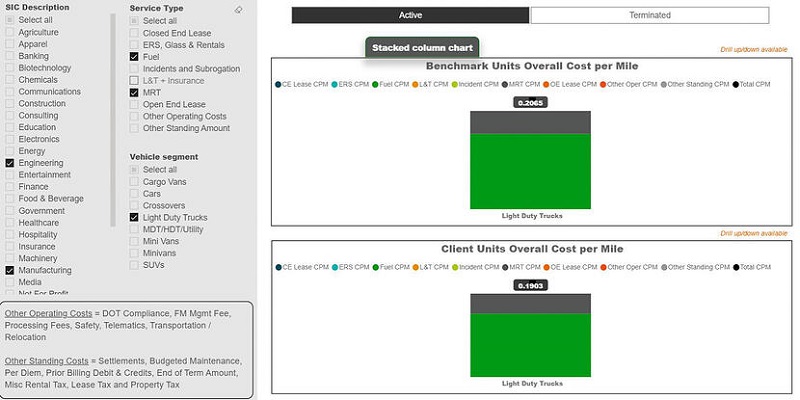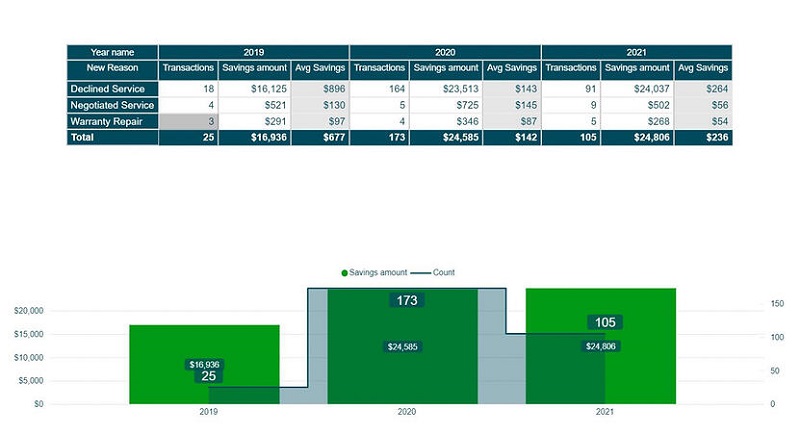How Our Annual Fleet Review Benefits Our Clients [Interview]


Evaluating performance is key to improvement, while also providing the chance to celebrate successes. This is why we conduct an annual fleet review for our customers. Annual fleet review meetings are a chance for us to sit down with our customers, review the year that just passed, offer cost-saving reduction strategies, and look ahead to the upcoming year.
For this blog, we interviewed our Business Development Director, Bob Rothe, to discuss our review process and how it benefits our customers’ bottom line and our ongoing relationship with them.
Let’s get into our conversation with Bob!
What is an annual fleet review and what does it entail?
BR: An annual fleet review is essentially a report card on our performance as a fleet provider. We’re watching to see if we’re hitting the annual goals and objectives we put in place. This is especially critical for new customers because they typically hire us to correct inefficiencies in their business. For existing customers, we continue to set annual goals and use the annual review to track metrics and report back on our progress.
Customers are typically satisfied after fleet reviews because it allows them to see what we have accomplished together over the past year; it helps assure them that we’re on the right track and that we’re meeting their goals and objectives.
We start with a high-level overview and then focus on specific metrics. We have access to nearly 250 reports and thoroughly review them in advance of the fleet review to find anomalies, assess progress towards targets, and identify areas that need addressing. We narrow down the number of reports presented at the review to the most meaningful information and actionable data.
How does Ewald’s approach to annual fleet reviews differ from other fleet management companies?
BR: We have been doing annual fleet reviews for over 25 years, and the process has continued to evolve. For example, we’ve started bringing in more visual representation of the data, which helps our customers digest the information more easily.
Most large national FMCs do offer annual reviews but we compete with them by offering a boutique service. The biggest difference is that larger competitors typically do a data dump at an annual review, which is acceptable if your company has a dedicated fleet department to interpret the data.
We work with both large and small fleets at Ewald, and the smaller fleets often don’t have a dedicated person to oversee their fleet or even a fleet manager. They’ve been assigned fleet management as a responsibility of their role but typically they’re HR professionals, administrative employees, or CFOs that have other tasks on their plate. They need an interpretive report they can use to make decisions, not just raw data.
Many of the services we provide in our program have been requested by customers based on their needs. Our focus is on offering services that will provide the most benefit to them and out annual fleet review has been developed over the years to best suit our customers’ needs.

What are the most important benefits of the annual fleet review for Ewald’s clients?
BR: The most important benefit of an annual fleet review for our clients is assuring them that we are progressing towards their goals and objectives. Cost containment and reduction are a big part of our program. The reviews reinforce that we are hitting those goals and that our customers are working with the correct business partner.
The annual review also lets us benchmark clients and compare their expenses to hundreds of thousands of similar vehicles from other fleets. This empowers them with information they can use to make better decisions for their own business.

Another key benefit of the annual review is that it keeps our customers informed on what is currently happening in the automotive and fleet industry. Topics can include fleet allocation challenges, incentive programs, dealership inventory and pricing, and more.
Can you describe an example of how an annual fleet review led to quantitative improvements for a client?
BR: One of our newer customers was operating a fleet of service vans, and because they had kept the vehicles in service for too long, their repair costs were extremely high. Once we began tracking repair costs, it became clear that they spiked once vehicles were older than five years or reached 120,000 miles. This visual proof convinced the customer that they were spending more operating an older fleet than they would on a newer fleet. They now have a newer fleet and are spending less money.
In a fleet review with another client, my main focus was to reinforce the need to cycle out their vehicles sooner to reduce expensive repairs like engine and transmission repairs. They pay $7,200 annually to be enrolled in our maintenance and fuel program and have documented a nine-month YTD savings of $24,806 in 2021 alone. That’s a good return on investment!

What issues does having an annual fleet review help prevent for your clients?
BR: We help prevent our clients from overspending on their fleet. Depending on how large the customer is, they may have vehicles across the country, and we help identify underutilized vehicles. We prevent our customers from keeping vehicles in service too long that are no longer efficient, saving them from diminishing returns. We also identify which makes and models are best for a particular company.
We also identify driver behavior that is costing our customers. We use maintenance and repair costs to identify employees that may have bad driving habits; higher costs in these areas may be related to poor driving habits.
We identify employees who are overspending on fuel so we can correct the situation. For example, an industry statistic is that 15% of employees will purchase premium unleaded fuel when it’s not necessary. There can be a 75-80 cents per gallon difference between regular unleaded and premium unleaded, so having this information allows our customers to address this with their employees. Our fuel program also measures how much fuel an employee is purchasing and whether the amount matches tank capacity; this allows our customers to identify fuel fraud and take appropriate action.
There are also cases where drivers aren’t using the national account repair centers they have access to under our maintenance program. We show them how much they can save by persuading employees to visit these preferred repair centers for maintenance work. There also may be some employees that should be getting their vehicle’s oil changed more than they are. The annual review shows whether or not there is compliance with the recommended maintenance intervals.
Our commitment to clients is not that we simply add a layer of expense through them paying for our services. In the right relationship, we provide our clients with true savings and help lower their overall business costs.
My favorite report to present in annual reviews is the mechanical cost savings report. Using this report, we demonstrated to one of our customers with 100 vehicles in their fleet, an annual savings of $30,000. Their annual investment was only $9,600, plus they gained greater efficiency and access to the data for better fleet decisions in the future.
We don’t want to charge fees to enroll customers in programs that end up costing them money. We electronically capture all expenses, fuel, and maintenance and use this data to demonstrate how our program saves them money. More often than not, our program more than pays for itself.

Is there anything else you would like readers to know about Ewald’s annual fleet review?
BR: Annual fleet reviews are positive meetings that reinforce our relationships with our customers. We are usually meeting with the person who struggled with managing their fleet before partnering with us.
One of our customers, a CFO, recently told us that our program has saved him so much time and is functioning well because he doesn’t need to involve himself in his company’s fleet program anymore. He couldn’t be more pleased!

